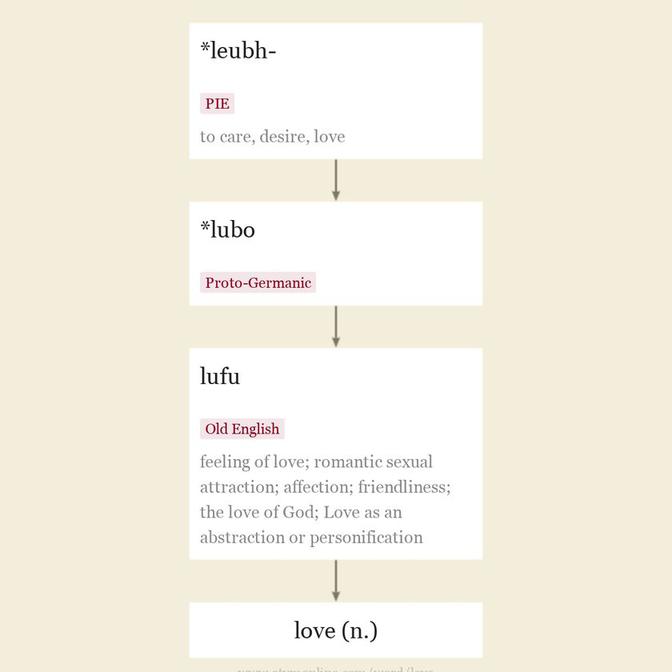lady-love n.
"
Entries linking to lady-love
c. 1200, lafdi, lavede, from Old English hlæfdige (Northumbrian hlafdia, Mercian hlafdie), "
The medial -f- disappeared 14c. The word is not found outside English except where borrowed from it. Sense of "
Applied since Old English to the Holy Virgin, hence many extended usages in plant names, place names, etc., from genitive singular hlæfdigan, which in Middle English merged with the nominative, so that lady- often represents (Our) Lady's, as in ladybug. Lady Day (late 13c.) was the festival of the Annunciation of the Virgin Mary (March 25). Ladies' man first recorded 1784; lady-killer "

Old English lufu "
The weakened sense "
To fall in love is attested from early 15c.; to be in love with (someone) is from c. 1500. To make love is from 1570s in the sense "
"Even now," she thought, "almost no one remembers Esteban and Pepita but myself. Camilla alone remembers her Uncle Pio and her son; this woman, her mother. But soon we shall die and all memory of those five will have left the earth, and we ourselves shall be loved for a while and forgotten. But the love will have been enough; all those impulses of love return the love that made them. Even memory is not necessary for love. There is a land of the living and a land of the dead and the bridge is love, the only survival, the only meaning." [Thornton Wilder, "Bridge of San Luis Rey," 1927]
updated on October 10, 2017